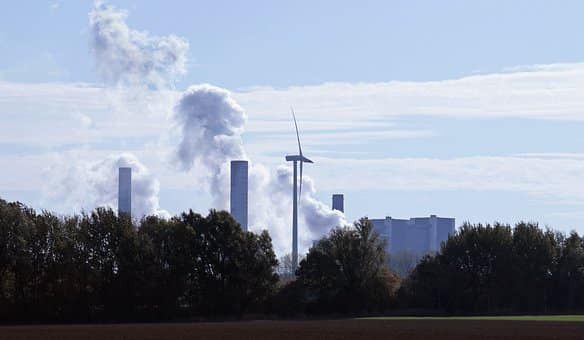Court Rejects EPA’s Rollback of Power Plant Emissions Rule

The U.S. Court of Appeals for the D.C. Circuit on Jan. 19 vacated the Environmental Protection Agency’s Affordable Clean Energy, or ACE, rule for regulating power plant emissions, finding that the rule “hinged on a fundamental misconstruction” of the Clean Air Act. The agency finalized the rule in June 2019 replacing more stringent Obama-era restrictions. The court also ruled that amendment of the regulatory framework to slow the process for emissions reductions is arbitrary and capricious. The court ruling comes as a win for the Biden administration’s energy agenda, which prioritizes clean energy and climate action.
Obama’s signature Clean Power Plan, or CPP, established the first federal emission guidelines for power plants, setting a target for each state, with a goal of reducing emissions by 32 percent below 2005 levels by 2030. The U.S. Supreme Court halted the rule in 2016 pending review in the D.C. Circuit Appeals Court.
While the CPP set national and state-specific emissions goals, the ACE rule does not require that states reach any specified minimum emission reduction. Instead, states were given the discretion to choose from a list of six “candidate technologies” to improve efficiency at coal-fired generators and set performance standards for each facility. The unit-specific performance standards were to reflect the emission limitation achievable through the use of “best system of emissions reduction” technologies. Under CPP, the best system was one that improved the heat rate at power plants and also prioritized lower-emitting plants; the EPA then calculated specific emission reductions achievable through that system and published that as emission guidelines for states.
In establishing the ACE rule, the EPA limited itself to techniques that could be applied broadly to coal-fired plants, which primarily amounted to upgrades to existing equipment, confining its authority to physical changes to the power plants themselves. The agency did not address emissions from other types of fossil-fuel-fired power plants, the court noted. Since CPP’s best system was determined by using certain emission control measures that the EPA characterized as physically operating off the site of coal-fired power plants, such as generation shifting and emissions trading, the agency concluded that it had no choice but to repeal the plan.
The former Trump administration made repealing Obama-era environmental rules a priority and completed or initiated rollbacks of more than 100 rules. The largest deregulatory action of the Trump administration was to weaken the 2012 fuel economy and carbon dioxide emissions standards, including revoking California’s authority to pursue its own standard and ZEV mandate, and establishing one set of national auto-efficiency standards. Under Trump, EPA has eased methane rules for the oil and gas sector, reversed a finding that formed the basis for the Obama-era Mercury and Air Toxics Standards; relaxed the regional haze rule guidance to provide more leeway for states; repealed the 1995 ‘Once In, Always In’ policy for major air pollution sources and weakened regulations governing the disposal of coal ash from power plants. The Trump administration updated regulations implementing the National Environmental Policy Act, the first comprehensive revision since 1978, creating a time limit of one year to complete environmental assessments and two years for environmental impact statements.
EnerKnol Pulses like this one are powered by the EnerKnol Platform—the first comprehensive database for real-time energy policy tracking. Sign up for a free trial below for access to key regulatory data and deep industry insights across the energy spectrum.
ACCESS FREE TRIAL